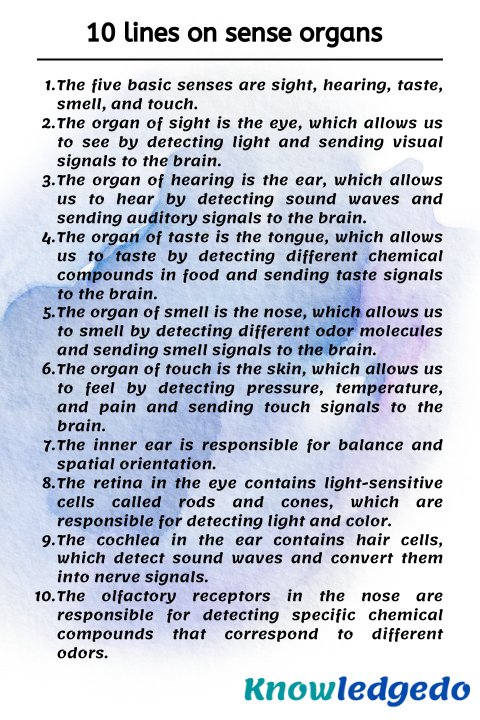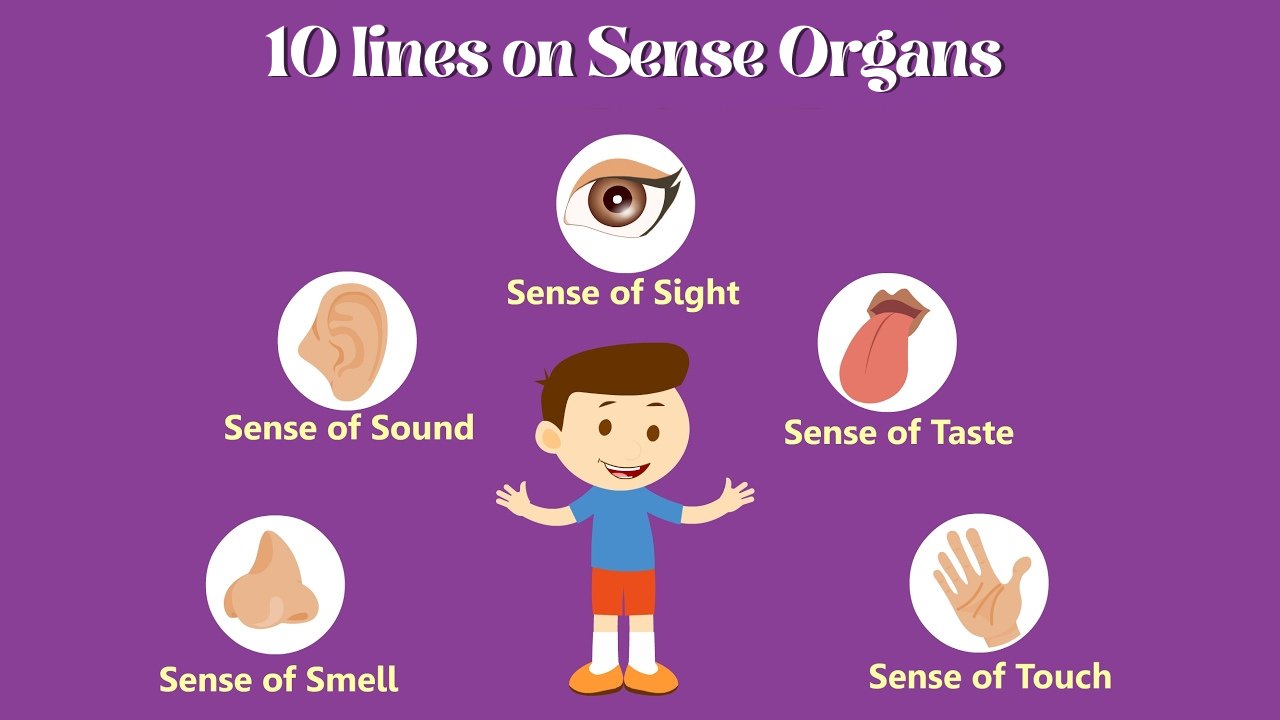Today, we are sharing 10 lines on sense organs in English This article can help students who are looking for information about 10 lines on sense organs. This essay is very simple and easy to remember. The level of this essay is moderate so any student can write on this topic.
This article is generally useful for class 1,class 2,class 3,class 4,class 5,class 6,class 7,class 8,class 9,class 10,class 11,class 12
10 Lines on sense organs
1) The five basic senses are sight, hearing, taste, smell, and touch.
2) The organ of sight is the eye, which allows us to see by detecting light and sending visual signals to the brain.
3) The organ of hearing is the ear, which allows us to hear by detecting sound waves and sending auditory signals to the brain.
4) The organ of taste is the tongue, which allows us to taste by detecting different chemical compounds in food and sending taste signals to the brain.
5) The organ of smell is the nose, which allows us to smell by detecting different odour molecules and sending smell signals to the brain.
6) The organ of touch is the skin, which allows us to feel by detecting pressure, temperature, and pain and sending touch signals to the brain.
7) The inner ear is responsible for balance and spatial orientation.
8) The retina in the eye contains light-sensitive cells called rods and cones, which are responsible for detecting light and colour.
9) The cochlea in the ear contains hair cells, which detect sound waves and convert them into nerve signals.
10) The olfactory receptors in the nose are responsible for detecting specific chemical compounds that correspond to different odours.

10 lines on sense organs (set-2)
1) The eye is the organ of sight, which allows us to see by detecting light and sending visual signals to the brain.
2) The ear is the organ of hearing, which allows us to hear by detecting sound waves and sending auditory signals to the brain.
3) The tongue is the organ of taste, which allows us to taste by detecting different chemical compounds in food and sending taste signals to the brain.
4) The nose is the organ of smell, which allows us to smell by detecting different odour molecules and sending smell signals to the brain.
5) The skin is the organ of touch, which allows us to feel by detecting pressure, temperature, and pain and sending touch signals to the brain.
6) The olfactory receptors in the nose are responsible for detecting specific chemical compounds that correspond to different odours.
7) The retina in the eye contains light-sensitive cells called rods and cones, which are responsible for detecting light and colour.
8) The cochlea in the ear contains hair cells, which detect sound waves and convert them into nerve signals.
9) The inner ear is responsible for balance and spatial orientation.
10) The tongue has different taste buds for sweet, sour, bitter, salty, and umami tastes.
5 Lines on sense organs
1) The five basic sense organs are the eye, ear, tongue, nose, and skin.
2) These organs detect specific stimuli, such as light, sound, taste, smell, and touch.
3) The signals from these organs are sent to the brain to be interpreted as sensations.
4) The eye’s retina contains light-sensitive cells called rods and cones, while the ear’s cochlea contains hair cells that detect sound waves.
5) The nose has olfactory receptors that detect specific chemical compounds to identify different odours. The tongue has different taste buds for different tastes like sweet, sour, bitter, salty and umami.
FAQ
Answer: The five basic sense organs are the eye, ear, tongue, nose, and skin.
Answer: The eye is the organ of sight, which allows us to see by detecting light and sending visual signals to the brain.
Answer: We hear through the ear, which is the organ of hearing. It detects sound waves and sends auditory signals to the brain.
Answer: We taste through the tongue, which is the organ of taste. It detects different chemical compounds in food and sends taste signals to the brain.
Answer: We smell through the nose, which is the organ of smell. It detects different odour molecules and sends smell signals to the brain.
